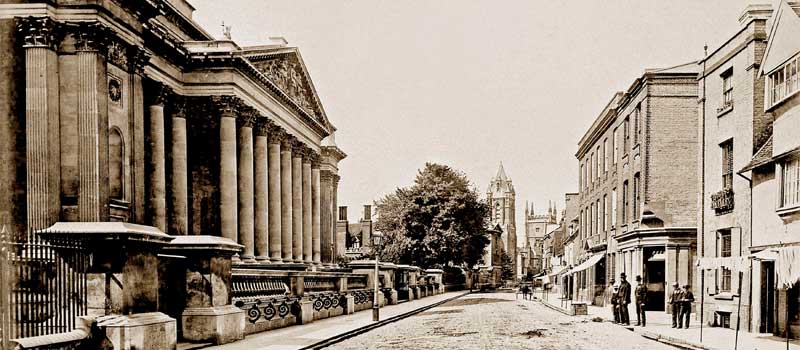In 2017 we are celebrating the 50th anniversary of formal establishment of research in Cambridge Assessment. Does this mean that, before 1967, there was no research or research discussion at all in the organisation?
In 2017 we are celebrating the 50th anniversary of formal establishment of research in Cambridge Assessment. Does this mean that, before 1967 there was no research or research discussion at all in the organisation? Insights from three points in time -1896, 1938 and 1954 dispute this.
A fascinating scrapbook is held in the Group Archive which details the preparations and proceedings of a conference funded and organised by us in 1896 to discuss the report, and proposals therein, of the Royal Commission on Secondary Education. At this time Cambridge Assessment, called the University of Cambridge Local Examinations Syndicate, ran entirely independent exams free of all national and governmental control so any drive for change and reform came from within the university. Some costings and arrangements for the conference were modelled on those used by another venerable Cambridge organisation, Cambridge University Music Society just a month or two before.
Whilst the content of the conference – management of secondary education; the establishment of a General Educational Council, teacher registrations and training is astonishingly familiar, the minutiae of the arrangements convey the era. A conversazione (a scholarly social gathering, akin to a drinks reception) was held at the Fitzwilliam Museum (pictured below in the 1800s) for which electricity had to be laid on specially. Records show a quote of £3.15.6d (about £350) from a local company and £11.0.0d (about £1300) from the London Electricity Company. The Cambridge Electric Company was chosen to dazzle the company for the evening and it brings a whole new meaning to ‘enlightened’ research discussion!

In 1938 the Research Committee launched an ambitious experiment to test the consistency and reliability of marking in English Composition examinations. The project is well documented and involved special marking sheets and a complicated programme of triple marking to detect bias and fatigue in examiners in a move that began to question the fallibility of the examiner. Interrupted by the demands of war, the same research was ultimately written up for publication in 1946 alongside experimental work into Higher School Certificate Biology and Zoology.
The need to monitor standards across the boards became more pressing after the introduction of the single subject GCE exams in 1951. In 1954 sufficient evidence was available to embark on an ‘Enquiry into the exam in Latin at O Level conducted by the 8 approved examining bodies’ which considered similarity in standards and variations in practice. The results ranked the boards in order of severity, and while the Oxford and Cambridge Board was at the top, the Oxford Board was ranked at the bottom with Cambridge towards the middle. These three boards later joined in the formation of the Test Development and Research Unit, our first formal research programme in what must have been an interesting partnership that still exists within the formation of Cambridge Assessment today.
Gillian Cooke and Gill Elliott
Group Archivist, Cambridge Assessment and Deputy Director, Research Division, Cambridge Assessment